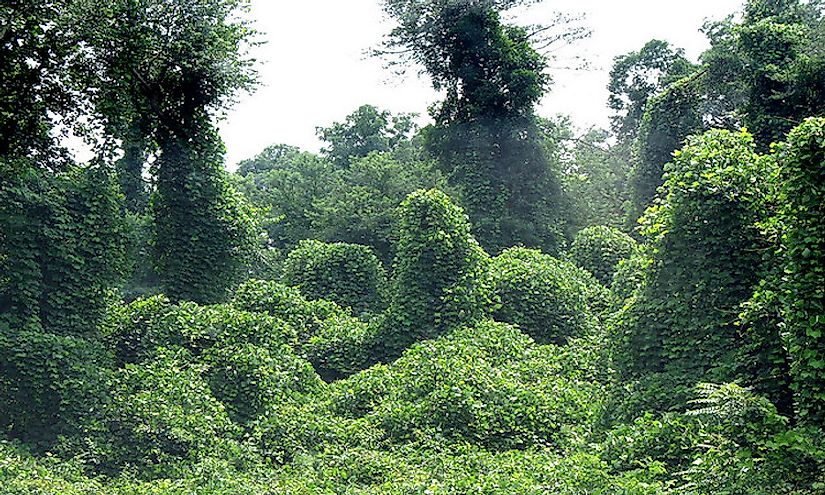How Did Kudzu Make It to the United States?

Kudzu is a group of plants in the pea Family Fabaceae. They are climbing and coiling perennial vines which are native to Asia and parts of the Pacific Islands. Kudzu climbs over vegetations and grows so rapidly that it kills the plants or shrubs due to its shading. The kudzu is derived from the Japanese name “Kuzu” but was written as kudzu in historical Romanization. Kudzu can be considered as invasive plant and noxious weed where it has been naturalized. The plant is also edible.
The Introduction And Spread Of Kudzu In The US
Kudzu was introduced into the US in 1878 from Japan as a Centennial Exposition in Philadelphia and New Orleans in 1883 during an exposition. The plant was widely marketed as an ornamental plant that would provide shade for porches as well as a high protein content for livestock fodder and as a cover for soil erosion in the 20th century. Kudzu was cultivated by civilians who were paid $8 per hour to plant the vine on the top soil with the government distributing 85 million seedlings and funding the planting of the crop at $19.75 per 0.004 square miles. By 1946, over 1.2 million acres of Kudzu had been planted in the US. Kudzu is also used as herbal medicine and for the treatment of alcohol-related complications. The rural-urban migration of farmers due to the boil weevil infestation and the failure of the cotton led to the widespread of Kudzu in the country. The US Department of Agriculture removed the vine from the list of cover crops in 1953 and declared it as a weed in 1970. Currently, Kudzu has been placed on the Federal Noxious Weed List and is estimated to cover 7.4 million acres of the Southeastern US land especially Alabama, Georgia, Florida, Mississippi, and the five boroughs of New York.
Effects Of Kudzu In The South
Kudzu was introduced in the US as a remedy for soil erosion in the Pennsylvania. In the 20th century, the vine was used to shade homes and for other uses bringing it into close contact with other plants and land which encouraged its spread in the southeast. Currently, the vine covers over 12,000 square miles of the Southern US and consumes it at an average rate of 120,000 acres per year while destroying other plants, buildings and power lines in the process. The vine kills other plants by covering their leaves, breaking branches, and even uprooting the trees. The ability of Kudzu to grow quickly allows it to out-do the native plants. The high level of biodiversity in the south also facilitates the growth and effects of Kudu in the area. Kudzu adapts very well to environmental stresses such as droughts and frosts and can flourish in a nitrogen-deficient soil where the native plants cannot grow.
The Implication Of Kudzu
Kudzu has both cultural and economic impacts in the US. The country loses an approximately $100 to $500 million annually on forest productivity. The cost of controlling the vine is estimated at $5,000 per 2.5 acres annually while power companies spend over $1.5 million annually to repair the damages caused by the plant. Kudzu has also invaded some of the national parks in the south threatening to diminish their historical value.
Control And Removal Of Kudzu
Some of the methods used to control Kudzu in the Southeastern US include mechanical, chemical, and biological methods. The mechanical method involves mowing the plant during growing season and burning the plant material to prevent the vines from growing again. Chemical control is less time consuming but a very expensive method of Kudzu control. Some of the chemicals used include Tordon and Picloram. Killing the plant requires a lot of chemicals. Soil solarization is also a common chemical method of controlling the vine and involves the use of solar-enhanced heating of the soil to kill kudzu roots. Biological means involves the use of other organisms such as bacterial blight, wild goats and sheep to control the plant











